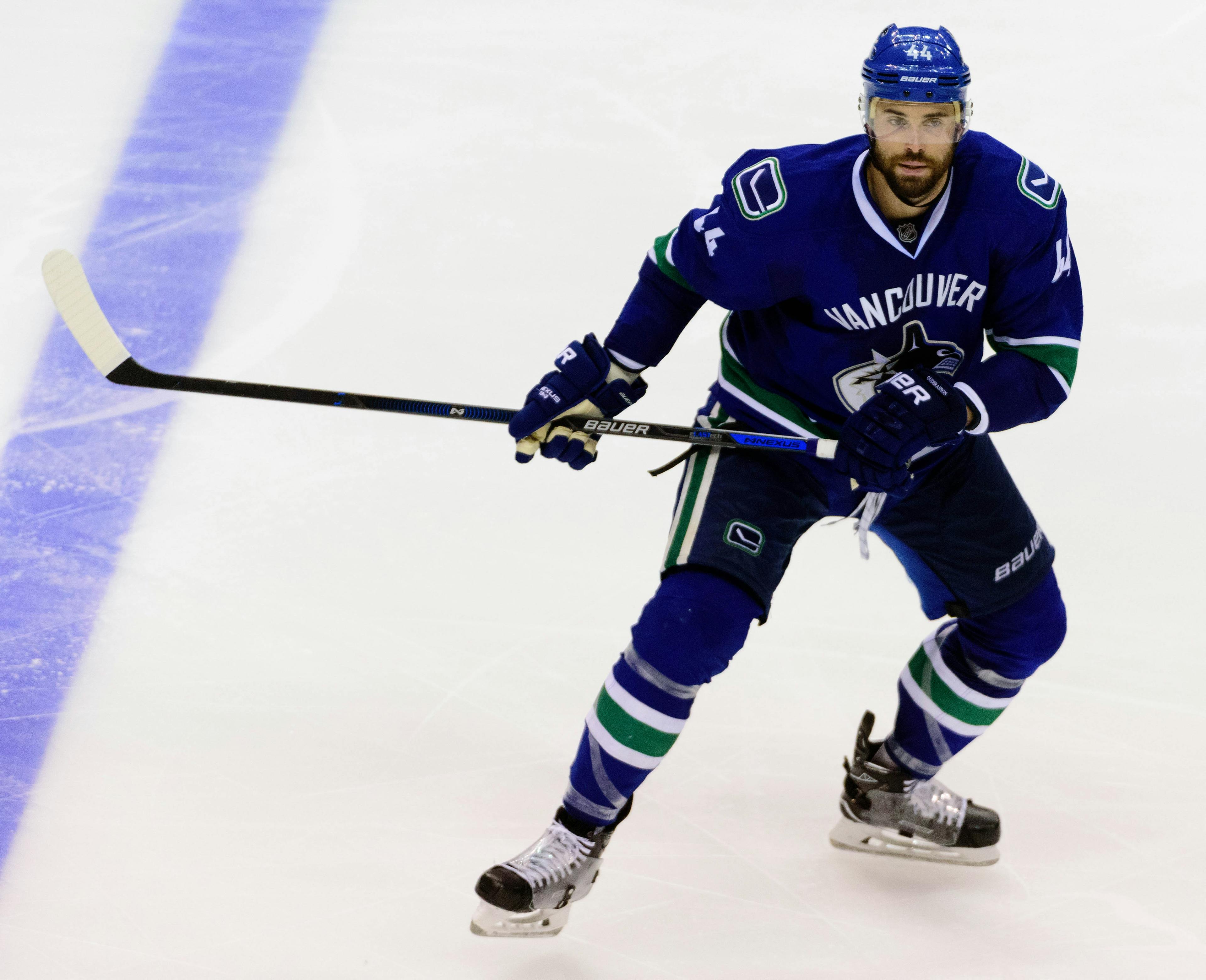Canucks general manager Jim Benning’s first priority after signing his contract extension last Wednesday was putting pen to paper on a deal for pending unrestricted free agent defenceman Erik Gudbranson. Less than a week later, the two agreed to terms on a three-year extension valued at $12-million.
While the Canucks weren’t getting what they deemed to be fair value for Gudbranson on the market, they’ve made it apparent that this was always their desired outcome. Speaking to Sportsnet 650 hours after announcing the agreement, Benning drove the message home, adding that he’s “just happy we got him signed.”
It’s a sentiment the Canucks organization seems to share from top to bottom. Speaking to the media after yesterday’s morning skate, Canucks head coach Travis Green said “It’s good for the team; good for the organization. He’s only 26-years-old, and I don’t think we’ve seen the best of him yet, but I’ve liked what I’ve seen lately.”
"When Gudbranson is on his game and playing up to his capabilities, skilled players don't enjoy lining up against him." – Coach Green pic.twitter.com/yuL3d8YnZY
— Vancouver Canucks (@Canucks) February 20, 2018
They also seem to admit, across the board, that Gudbranson has more to offer.
“I don’t think we’ve seen [Gudbranson] at his best,” Green told reporters on more than one occasion on Tuesday. Though Benning wasn’t quite as blunt as Green, his comments offered similar insights into his decision. Benning said “we often forget [Gudbranson] is only a 25-year-old player,” with the suggestion being there is room for him to grow.
Editor’s note: Gudbranson is 26-years-old.
That’s not an entirely unreasonable stance. The Canucks acquired Gudbranson as a 24-years-old, which is usually when defencemen start to peak based on most of the research done in the public sphere. For whatever reason, Gudbranson’s play has regressed — and significantly at that — as a Canuck. Whether it’s instability, extra scrutiny of a Canadian market or the uncertainty of Gudbranson’s situation driving that drop, the Canucks aren’t without reason to think these two partial seasons (injuries have muddied the picture, certainly) are anomalous.
When Gudbranson was with the Florida Panthers, even though his numbers weren’t great (or even good, really) by any measure, it wasn’t this bad. By Gudbranson’s last season as a Panther, he was averaging 20-plus minutes a night, and when paired with Brian Campbell, left most games in the black by on-ice shots and goals. Though Gudbranson’s hit totals from that last season as a Panther to his second as a Canuck are almost identical, his former team had the puck far more often than this year’s Canucks, so it’s safe to assume he was a far more physical player, too.
On the other hand, it’s a lot easier to look at Gudbranson’s larger body of work and come to the conclusion that what Vancouver’s seen from him in these last two seasons is far more indicative of the player they acquired than his best year as a Panther.
As CanucksArmy’s own Jackson McDonald rightly points out, Gudbranson has but one season to his credit in which his team has left in the black by shot attempts with him on the ice. In a career that’s spanned parts of seven seasons and almost 400 games, we can start to observe some consistent patterns, and in that sense, these last two as a Canuck appear to be in line with those trends.
This season has been significantly worse than any other for Gudbranson, but that his team is suffering poor on-ice results with him over the boards isn’t anything new.
It’s clear, though, that the Canucks aren’t paying Gudbranson for what’s he been thus far in career. You could argue they did that when they acquired Gudbranson from the Panthers for Jared McCann and a pair of picks two years prior. But this, this is so very clearly about what’s to come.
The question then is whether the Canucks are right to expect improvement. The Athletic’s Tyler Dellow explored this by using a list of comparable players to Erik Gudbranson to see what the future holds. Based on that research, it seems highly unlikely that Gudbranson will be any better in years one, two or three of his new contract than he is currently.
It’s a low percentage bet on a low upside proposition. Considering Gudbranson is a third-pairing defenceman at 26-years-old, just how much room is there for growth with even the most optimistic outlook? Maybe Gudbranson becomes a fourth defenceman?
The next question then is whether that’s worth the opportunity cost that came along with the contract. Signing Gudbranson means the Canucks miss out on a trade return like, say, the second and fourth-round picks that Iain MacIntyre suggested as possible returns in his column on the deal. Then there’s the opening in the lineup that the Canucks could spend on a younger player or a veteran on a one-year deal that they can, again, flip for picks at the deadline.
In light of that, it’s hard to see any way the Canucks can call this a victory. That was kind of the problem with this from the start. It was a no-win situation from the Canucks, but they didn’t have to lose. They chose to.


